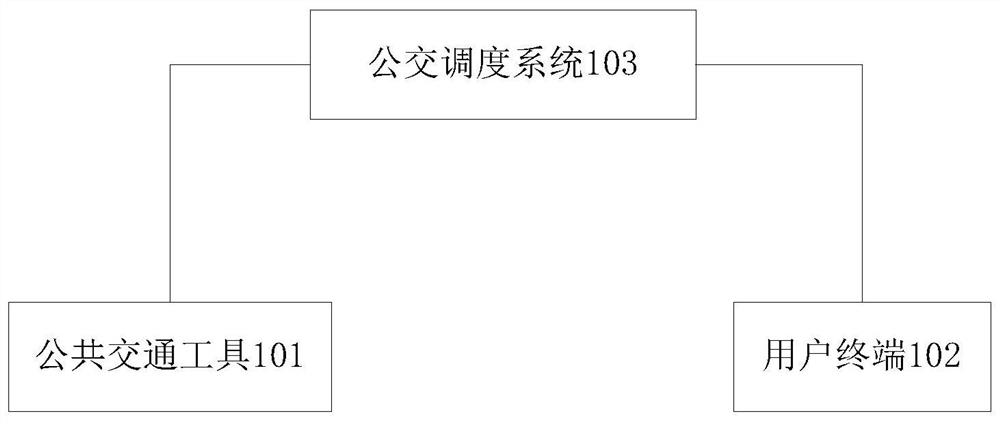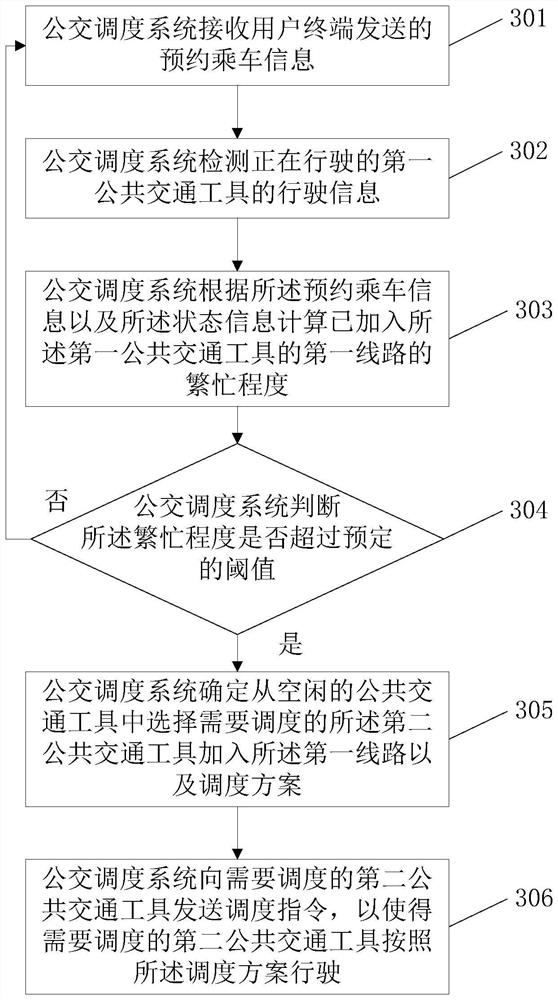Public transport means scheduling method, server and storage medium
A technology of public transport and dispatching method, applied in traffic control system, traffic flow detection, traffic control system of road vehicles, etc., can solve problems such as unsatisfactory carrying capacity, alleviate the shortage of public transport, improve practicability and Flexibility, the effect of increasing utilization
- Summary
- Abstract
- Description
- Claims
- Application Information
AI Technical Summary
Problems solved by technology
Method used
Image
Examples
Embodiment Construction
[0031] The embodiment of the present application provides a public transport scheduling method, related equipment, and storage media, which can determine the public transport that needs to be scheduled within the preset time threshold according to the scheduled ride information sent by the user terminal and the driving information of the running public transport. Transportation.
[0032] see figure 1 , figure 1 It is the framework diagram of the bus dispatching system. The bus dispatching system mainly includes: a public transport tool 101 , a user terminal 102 and a bus dispatching system 103 .
[0033] Wherein, the public vehicle 101 is equipped with a vehicle-mounted terminal, and the vehicle-mounted terminal is a terminal loaded with a global positioning system (global positioning system, GPS), which is used to locate the public vehicle 101 through GPS, thereby obtaining The travel information of the public transport 101, the travel information includes the location inf...
PUM
 Login to View More
Login to View More Abstract
Description
Claims
Application Information
 Login to View More
Login to View More - Generate Ideas
- Intellectual Property
- Life Sciences
- Materials
- Tech Scout
- Unparalleled Data Quality
- Higher Quality Content
- 60% Fewer Hallucinations
Browse by: Latest US Patents, China's latest patents, Technical Efficacy Thesaurus, Application Domain, Technology Topic, Popular Technical Reports.
© 2025 PatSnap. All rights reserved.Legal|Privacy policy|Modern Slavery Act Transparency Statement|Sitemap|About US| Contact US: help@patsnap.com



